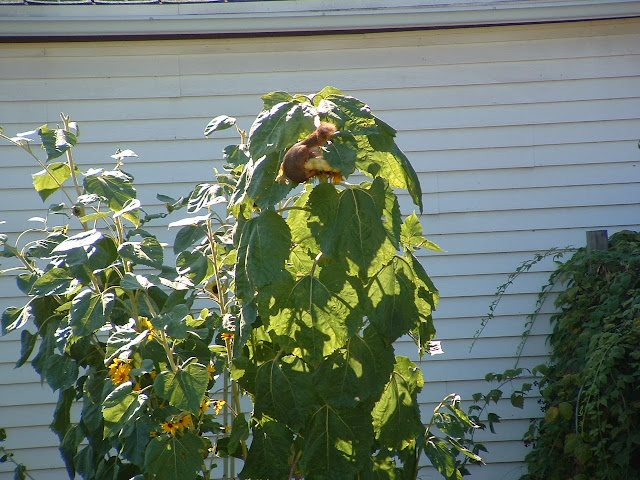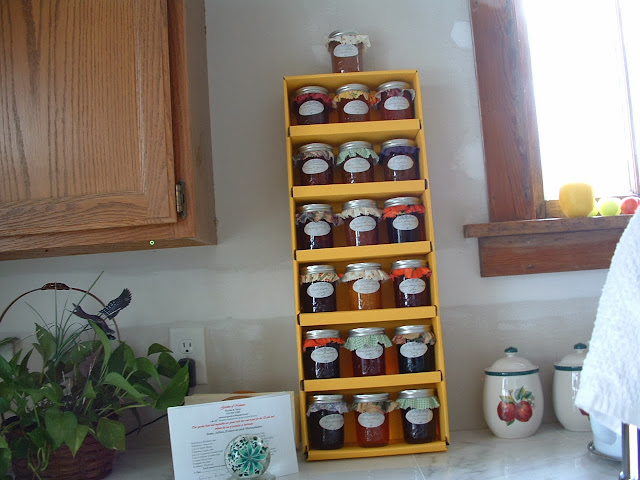.JPG) |
| Beautiful Borage 2013 |
It brightens my day to spend a few minutes depriving the big
corps of a few cents. These are the guys poisoning us with every type of
chemical foreign to our bodies that they can possibly dream up. They advertise
themselves as “a family company” or other such nonsense phraseology, hoping to
convince us that if it smells good and is pretty, it must be good for us. I
don’t remember when I began reading labels, but it was before the internet,
since I researched confusing ingredient labels at the library. I lugged home
heavy volumes written by pioneers writing environmental warnings. At that point
in time, the fancy, convenient stuff in the store was relatively cheap, so
although I was fairly educated I did not believe anyone had it out for me. Now
I know different.
 |
| Echinachea and Calendula 2010 |
Growing up in Iowa
has its perks, but one of them, trusting others, is not one of them. When I
left at age twenty-four, I was used to helping out anyone who said they needed
it. I believed what authorities told me. Please, don’t laugh, but I mostly I
trusted people who were older, better educated, and/or had more money than me.
Surely they must have my best interests at heart. After being raped, robbed and
pillaged, my pendulum swung the other direction and paranoia set in. I can now
say that I have enough life experience to understand that there are a few
totally trustworthy people, many untrustworthy people and a whole lot of us who
are mostly one way or the other. I also know now that I have an antenna that,
if I heed it, will point me in the correct direction.
 |
| Wild Garlic (reseeding) |
Some people will lie out of what they consider necessity: to
protect themselves or their loved ones, to keep their jobs, to avoid hurting
someone they care about. Some of these people feel guilt, others not so much. They
mostly live in fear. Then there are those who will lie because they desire
money and/or power over others. Some of these have never told the truth and do
not know how. They are the most convincing. Antennas up, folks.
 |
| Nasturtium 2005 |
Big Pharma and other large industrial corporations are
constantly killing people and shoving the consequences of their deceit off onto
others. There’s safety in numbers and always a way to pass the buck onto some
poor sap underling. They want good slaves. They want us marked (tattooed) with
rings in our noses so we can’t “root” out the truth. We are the livestock that
needs to be penned and controlled.
.JPG) |
| Valerian 2010 |
Many of these chemicals we lather and wear and swallow are designed
to keep us docile, weak and sick. We should have just enough energy to drag
ourselves to work in order to keep feeding their system and wallets, but too
tired and neuro-compromised to wake up to the manipulation. If we become
disabled from their so-called livestock management, well, then, they’ll give us
enough to barely subsist so we are totally dependent upon them to survive.
These slave drivers are very dangerous and pathological liars. Their main goal
is to remove us from Nature’s healing so that our bodies cannot rejuvenate.
 |
| Bee Balm (before blooms) 2011 |
The human body is divinely designed to be self-repairing. It
really needs very little encouragement to do so. That’s why these devils have
to work so hard to assault us from every conceivable angle. For those of us who
can still think, choices will present themselves. (I’m sorry to say, there are
those who are so far gone that they have lost the will and ability to choose). Do
we want to be good little sheep or do we want to resist? If we choose to
resist, just how do we do it? Each of us has to decide our own course of
action. As for me, I choose to use as few of their “products” as possible. Since
my skin is the largest of my organs, I treat it to chemical-free salves and
lotions I make myself. I can wash my hair like this: I run baking soda water
through it and rise with vinegar water. I have made my own vinegar, but usually
run out. I have nowhere to dig for soda, but if I lived in Utah,
I would!
 |
| Yarrow 2011 |
At this point in time, the bad guys do pollute some simple
things, so it’s best to read every label. I buy off brands, those that are un-advertised.
I choose what has had the least amount of human contact, i.e. processing. I
grow, forage and make as many items as I can. I research heavily, both at the
library and on the internet. I read, read, read. I study and I practice. I stay
away from “health” professionals. I’m sure there are fine holistic
professionals out there, but I cannot afford to see them. I am my own MD,
psychiatrist and nurse. I must be doing something right, as I am healthier than
I was five years ago.
 |
| Wormwood (in center) 2011 |
We are taught that it’s “normal” to become sick as we age.
That’s another lie. It’s normal to be healthy and barring interference, we will
be. If we feel ill, Nature provides all we need to get back on course. I have
researched plants extensively, and healing herbs can be found growing wild
virtually everywhere. I am learning how to recognize these little friends in
the park, along the river and in my own back yard. Ironically, they’re all the
plants I’ve been taught should be eradicated. Lucky for me, they are the hardy
and have found a way to survive so that I may live. I am learning how to
preserve their chemical constituents for off-season use.
Here are just a few herbal medicines I sometimes use:
Feverfew, Valerian, Echinacea, Garlic, Bee Balm, Plantain, Borage, Calendula, Chamomile, Wormwood, Yarrow, Nasturtium.





.JPG)

.JPG)
.JPG)
.JPG)

.JPG)



.JPG)

















